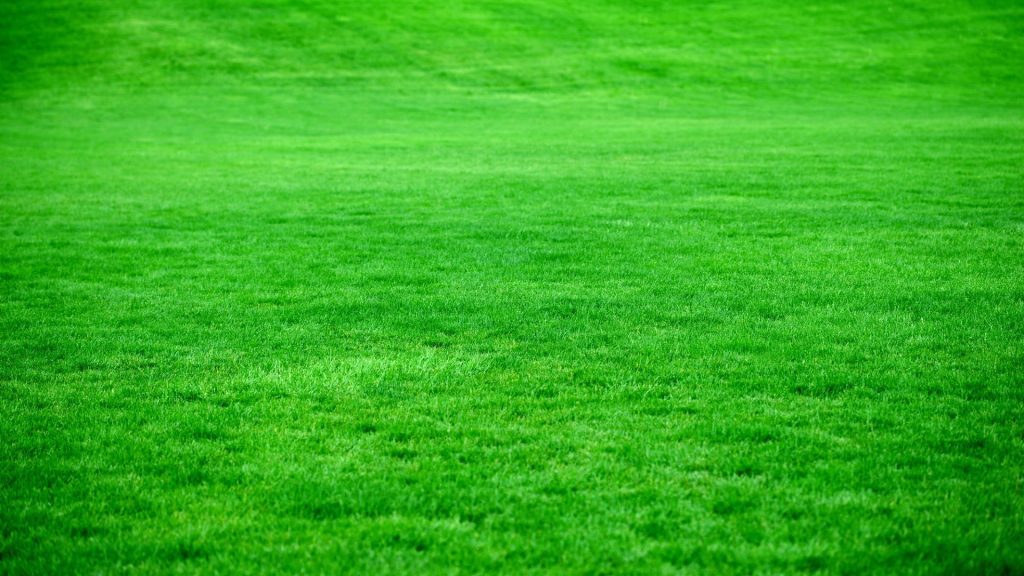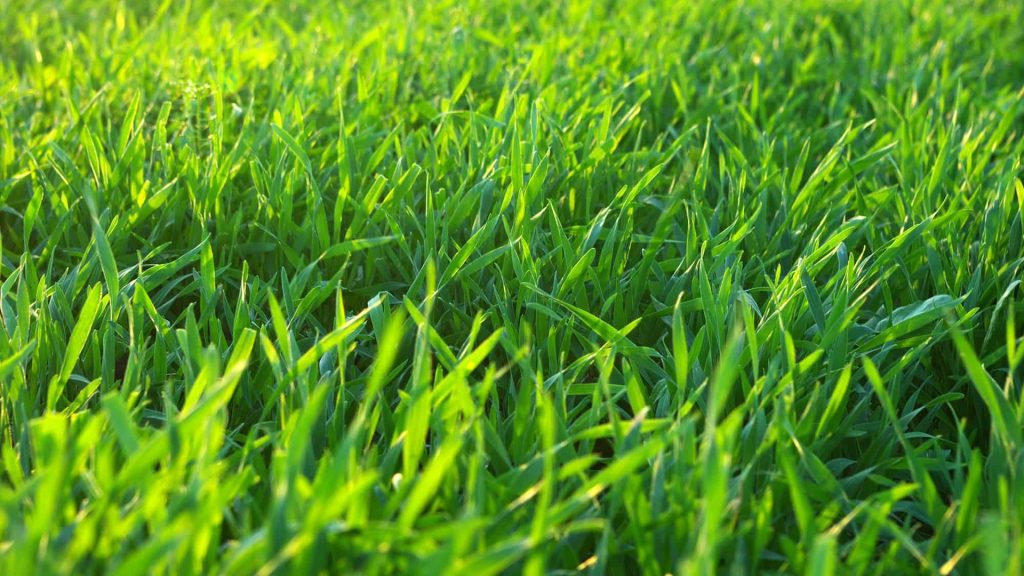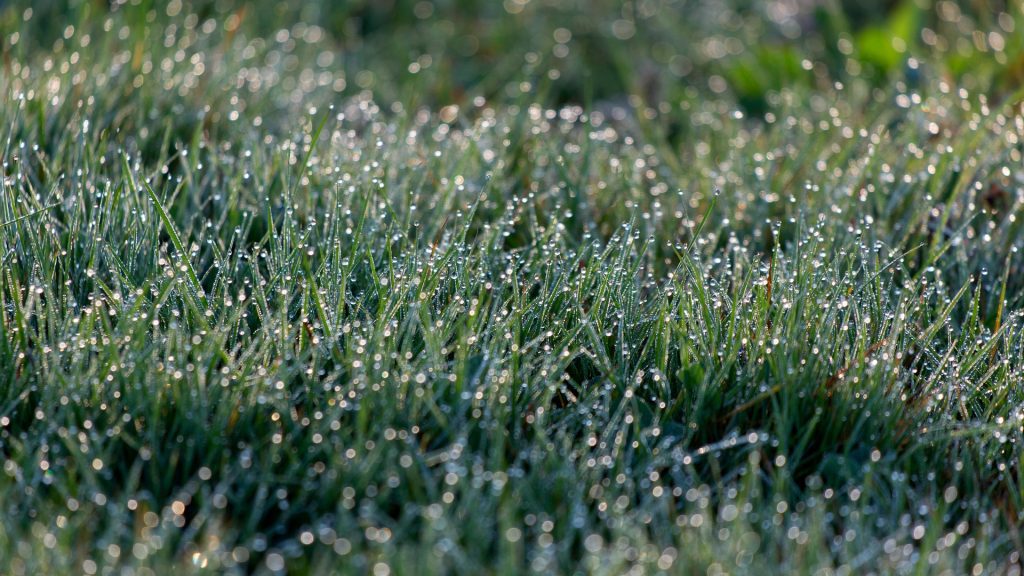
How to Dry Out a Wet Lawn Fast
There’s nothing worse than walking over your once-beautiful lawn to find that it now feels sloppy and wet.
When the ground is soaked in water, it damages the grass and leads to a whole host of problems that can be hard to rectify, so you want to get it fixed fast.
How do you dry out a wet lawn? If your lawn needs to be dried out immediately, applying sand to soak up the water is best. Otherwise, long-term fixes and preventative measures include improving drainage to the soil, leveling the lawn, and dethatching and aeration, just to name a few. But these are more maintenance procedures. With some basics on how to dry out a wet lawn, you’ll be able to treat the problem now and prevent it from happening in the future.
This guide covers every method possible so you can see which one suits your lawn setup best, so read on to get rid of the soggy soil once and for all.
Why Is Your Lawn Wet?
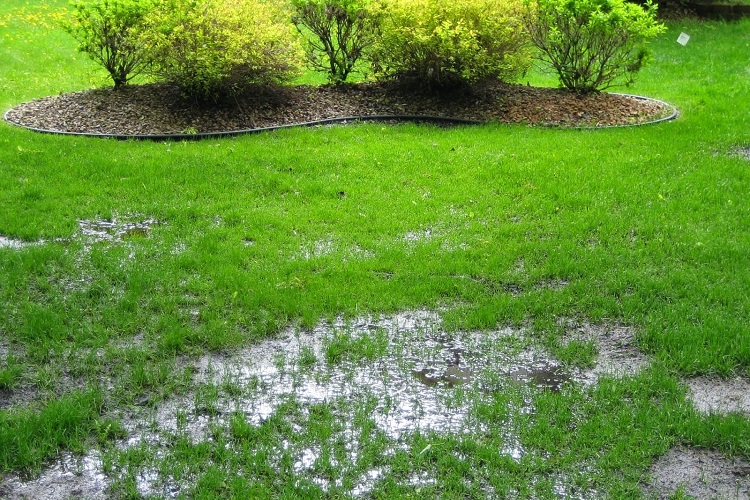
Whether a one-time event or a constant problem for you, having a wet lawn can do more damage to your grass than you realize.
These are a few of the common causes of wetness that might be creating a pooling of water on your lawn.
- Weather: A lot of recent rainfall will usually lead to excess water on the lawn, so it could be an act of nature that’s causing the soggy grass.
- Poor drainage: Certain soil types drain better than others, or your yard may be missing features like drains and rocks that can assist with clearing water faster.
- Irrigation systems: You may be watering your lawn too much for the soil to handle, so consider adjusting the irrigation system you use.
- Plumbing issues: If you’ve got a leaky pipe or a blocked drainage system, these could be leading to a water build-up on the grass.
What Counts as a Wet Lawn?

We all have different ideas about what constitutes a wet lawn, and those who live in wetter climates will probably always feel that their grass is a little too moist.
If you walk onto your lawn and feel that the ground is spongy, there is obvious runoff from your yard, weeds and fungi are prevalent, or you always bring mud into the house when you come inside, it’s probably too wet.
A wet lawn can be fixed easily with some preventative measures, but if you’re not sure where the water is coming from, you may need to get this assessed.
Only you know how moist your lawn usually feels, so if you sense that it’s wetter than usual, it’s time to take action.
How to Quickly Dry Up the Lawn

A wet lawn isn’t always just a mild inconvenience, there can be times when it’s almost as if your whole yard has flooded. If this is the case, you’ll need a quick fix for drying out the lawn, and that’s where the power of sand can come in.
With a few bags of sand, you can spread the drying substance out over it and on top of the grass, following a zigzag pattern that ensures evenness.
This can be done by hand or with a broadcast spreader, aiming specifically for the areas where the water is the most pooled up.
Leave the sand for a week and see if the water is gone, but if not, you’ll need to repeat the process.
Once it appears that the water has been soaked up, you can remove the sand by shoveling or raking it, so that the grass can return to its former glory.
Tips for Preventing a Wet Lawn in the Future

If you hope to avoid a wet lawn in the future, there are loads of methods you can employ in the garden that will do just that.
Make these tricks part of your regular lawn maintenance routine to ensure that the moisture levels of your lawn’s soil are always at their best.
- Dethatching: Thatch is the dead grass that stays underneath the new grass and the soil, making it hard for the healthier grass to get what it needs as it stops the soil from absorbing water. Dethatching the lawn means removing this dead grass which opens up the absorption abilities of the soil once more and helps with wet lawns.
- Aeration: The aeration process is an important one for the health of your grass, as it opens up pockets in the soil to let water and nutrients in. Aeration is also great for assisting drainage on the lawn, giving the water somewhere to go, so it’s perfect for wet lawns. You should only aerate once a year for best results, but even doing it this often is enough to help with drainage issues.
- Lawn leveling: If you take a look at your lawn while it’s pooled with water, you’ll likely notice certain areas that collect more water than others. This is due to the unevenness of the ground that sends water to specific areas. Using a lawn roller or some type of leveler can ensure this doesn’t happen and help the water to flow freely.
- Rain gardens: A rain garden is a specially placed garden that uses the runoff from your lawn to water the plants within it. Although this setup won’t work for every yard, it’s a great way to save water and prevent excess water from pooling on the grass. To create a rain garden, it must be positioned at a lower level than the lawn, so the runoff can travel down a slope and feed into it.
- French drain: A French drain uses the force of gravity to drain water away from the lawn and they’re easy enough to make with a few simple materials and placed at the lowest level of the yard. Acting as a trench, you fill it with rocks and other hard materials, then place a pipe at the bottom, which will stop water from pooling on your lawn and send it down this drain.
- New irrigation system: If you suspect that you’re watering your yard too much or your sprinklers still go on, even though it’s just rained, it may be time to upgrade to a smart irrigation system. These have sensors in the ground that can tell how moist the soil is and they’ll prevent watering from occurring if it’s recently rained.
- Changing the soil: The problem of a wet lawn could be coming from the soil’s inability to drain it, so you might need to look at changing it. you can add materials like rocks and sands to assist with drainage or give the soil a complete overhaul to one that’s better at absorbing moisture. Look for one with large particles in it which allow the water to pass through easily.
Achieving Moisture Perfection
A wet lawn isn’t an ideal place for your grass and plants to grow, so getting on top of any excess water issues in the soil is a must.
With a few methods in place to prevent this water logging in the future and a quick action plan for if it happens again, you can ensure the damage is minimal.
Related Questions
The soil underneath your lawn is one of the most important components of it, so you want to make sure conditions are always right.
If you still have questions about achieving the healthiest soil possible, we’ve answered some common ones that can show you where to start.
Should Soil Be Acidic or Alkaline for Grass?
A good pH level to strive for in your grass soil is between 6.5 and 7, as this is considered neutral to slightly acidic.
While there are grass varieties that handle higher or lower acidity than this, this pH level is what you should aim for, with various materials you can add that will change the soil’s acidity.
Why Is My Lawn Cracking?
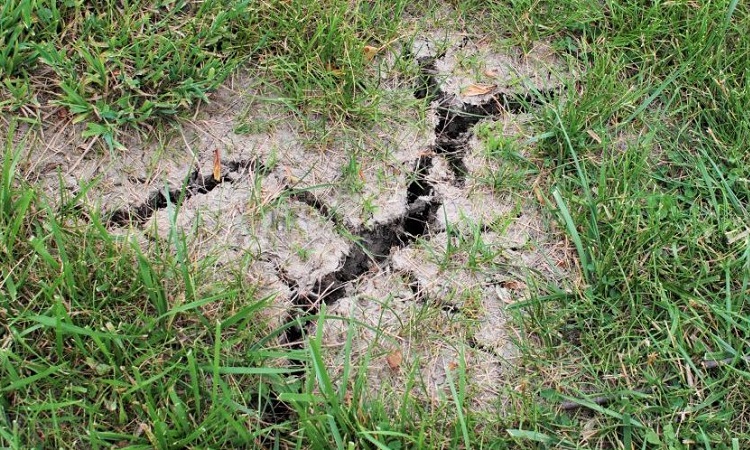
If you can see obvious signs of cracking underneath the grass, the soil underneath your lawn is likely lacking moisture.
This can occur in soil types that have a higher ratio of clay in them, but the most reasonable explanation is that the lawn isn’t being watered enough, so you’ll need to increase the watering frequency.
What Does Top Dressing Do?
Applying a layer of organic matter to your grass, like compost or fertilizer, can improve the nutrients within the soil and help with drainage.
Topdressing is thrown on top of the grass, as the name suggests, so you can enjoy all of these benefits without having to do too much manual work.
Resources:
